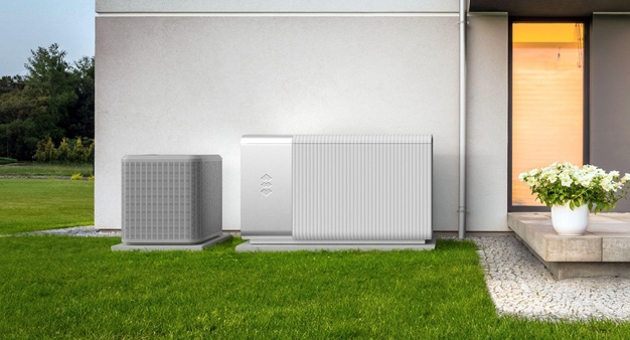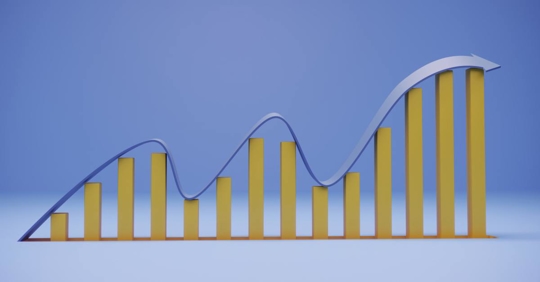If you live in Northern California, you’ve likely heard about the push toward a cleaner energy grid. Solar power plays a huge part in this shift, but it also creates a unique challenge for utility companies and the grid itself. The daily pattern of electricity demand and solar production creates an imbalance that many in the energy industry refer to as the "duck curve."
This isn’t just a technical problem for energy providers; it’s a situation that can impact everyone through high electricity costs and grid instability. Understanding this daily cycle is the first step toward finding a solution that helps both the grid and your wallet.
Ready to start saving on your cooling bills? Learn how our systems work by contacting our team at (949) 334-2243 or through our online contact form.
Unpacking the "Duck Curve"
The "duck curve" is a visual representation of a specific energy problem that's becoming more and more common in regions with lots of solar power, like California. Imagine a graph showing the net electricity demand over the course of a day. In the morning, demand is moderate as people wake up and start their day. Then, as the sun rises, solar panels start producing electricity, causing the net demand from the grid to drop significantly.
This creates the duck's "belly." As the day goes on and the sun begins to set, solar production falls off dramatically. Just as solar power disappears, evening electricity use ramps up as people get home from work and turn on their lights and air conditioning. This sudden, steep spike in demand creates the duck's " neck."
The core issue is that electricity is needed right at the moment when solar production is at its lowest. This requires the grid to ramp up other power sources, often less clean ones, very quickly to meet the sudden surge in demand. This sudden need for power strains the grid and can lead to higher electricity costs during those peak evening hours, typically from 4 p.m. to 9 p.m.
How We Fix the Imbalance
This is where thermal energy storage technology comes into play. The goal is to "load-shift", or move energy use away from those expensive, high-demand hours and into off-peak hours when solar is abundant and electricity is cheap. The Ice Cub, for residential properties, and the Ice Bear, for commercial properties, do exactly this. Our systems don't replace your existing air conditioning; they work alongside it to make cooling smarter and more efficient.
Here's how our systems work and help align energy use with what's available:
- Making Ice During the Day: During the low-cost, off-peak hours, when the sun is out and solar production is high, our units freeze water to store energy as ice. This is the “charging” period for the system, and it aligns with the "belly" of the duck curve.
- Using Ice for Cooling: During the high-cost peak hours from 4 p.m. to 9 p.m., when the grid is most strained, our systems melt the stored ice to cool your home or commercial building. This uses very little electricity from the grid, significantly reducing or eliminating the electrical load from your AC's compressor.
- Reducing Peak Demand: By using stored ice for cooling, the Ice Cub can deliver up to 5 tons of cooling during peak hours without burdening the grid. For commercial properties, the Ice Bear can reduce peak cooling electricity by up to 95% for as long as eight hours a day.
This process helps balance the grid by reducing the sudden spike in demand that creates the "duck curve's" neck. It’s a simple, elegant solution that uses a natural resource—water—to manage a complex energy problem.
The Benefits for You and the Grid
By using a thermal energy storage system, you're not just helping the grid; you're also putting money back in your pocket. Shifting your cooling load to off-peak hours can lead to significant energy cost savings, up to $1,200 annually for homeowners. For commercial clients, this shift can save time-of-use rates and reduce demand charges.
More than that, using our systems can lead to enhanced efficiency for your existing AC system by reducing its runtime and wear and tear. This helps extend the life of your equipment. It’s a win-win situation: you get reliable cooling, save money, and contribute to a more stable and cleaner energy grid. The system works in tandem with your existing ducted air conditioning system, and you won’t notice a difference in cooling performance—it just works.
Supporting a Cleaner and More Reliable Grid
The "duck curve" is a challenge that requires smart, forward-thinking solutions. By choosing thermal energy storage, homeowners and businesses are actively participating in creating a more sustainable energy future. Our systems align energy use with solar oversupply and off-peak demand, helping to support a cleaner and more stable grid. It’s a decision that benefits both you and the community.
We are dedicated to providing solutions that make cooling more efficient and accessible for our neighbors in Northern California. Our team is here to help you understand how our systems can be a great fit for your residential or commercial property, delivering comfort and savings while supporting the local energy grid.
To learn more about how thermal energy storage can work for you, we encourage you to reach out to our team. You can call us directly at (949) 334-2243 or fill out our online contact form to get started.

